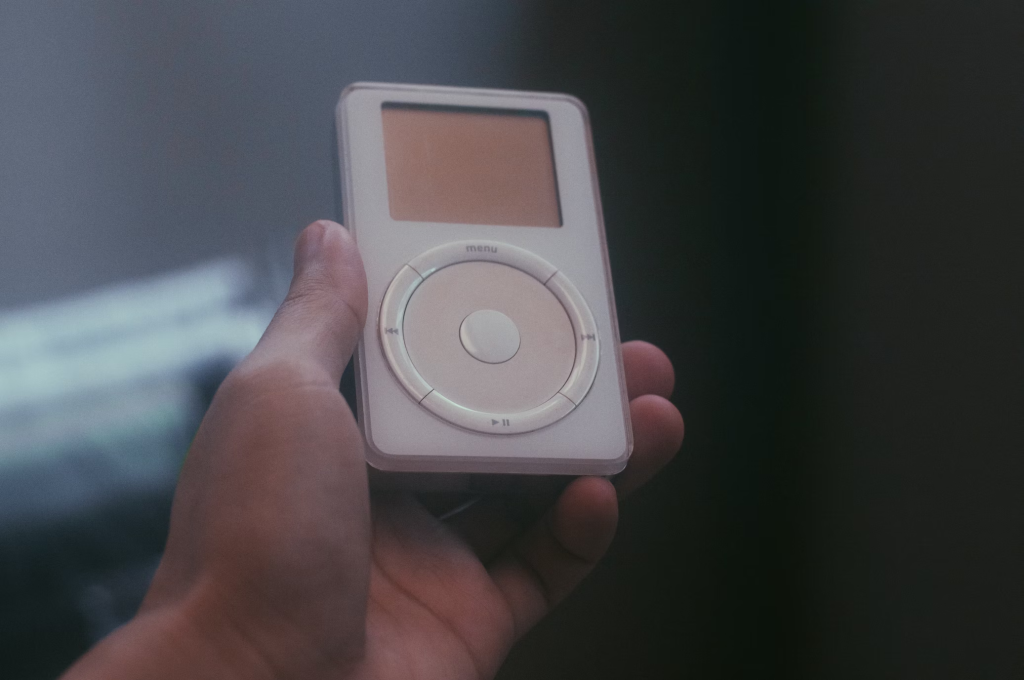“Scientific progress goes ‘boink’?” ~ Hobbes, Calvin & Hobbes
Throughout history, economic progress has been driven by technological and scientific advances. Often, forward-looking investors can immediately see the clear path to profits from such innovation – for example, Fundstrat’s Head of Research, Tom Lee, began his career by being one of the first to see that mobile phones would largely replace landlines, creating enormous investment potential.
All too often, however, the path is not quite clear. In the 1980s, Nobel laureates Peter Grünberg and Albert Fert suspected their work on giant magnetoresistance would be useful, but they certainly did not see that their discoveries would pave the way for Apple’s iPod (AAPL -0.29% ) and modern hard drives. And nobody realized that Jacques Monod, François Jacob, and François Gros’s discovery of mRNA in 1961 would ultimately lead to vaccines for the COVID-19 coronavirus six decades later, while fueling the rise of companies like BioNtech (BNTX 1.57% ) and Moderna (MRNA 4.65% ).

It is precisely in this spirit of fortuitous discovery and greater-than-expected potential that the Market Intelligence team would like to highlight some of the scientific research and innovation that came to our attention over the past year in 2023’s final Signal For Noise. Some of the research here has the potential to drastically improve the human condition, some advances present obvious paths toward investment returns (though we make no judgment here on associated risk), and some merely fill us with admiration for what human creativity and ambition can achieve.
Human health
The research that caught our attention this year ranged from the imminent to the fantastical. The mRNA technology that led to the COVID vaccine is now being applied to cancer treatments, once again tantalizing us with the hope that a cure for cancer might be found in our lifetime. For example, Moderna (MRNA 4.65% ) and Merck (MRK 1.13% ) have developed a personalized vaccine to trigger an immune response to melanomas that is in Phase III clinical trials, while a BioNTech and Genentech team-up have a similar vaccine for pancreatic cancer in Phase II trials. Biotech companies are developing mRNA-based treatments targeting many other types of cancer as well.
This year also saw the first gene-editing medical treatment approved by U.S. and British regulators – Casgevy, jointly developed by Vertex Pharmaceuticals (VRTX -0.08% ) and CRISPR Therapeutics (CRSP 2.54% ). Casgevy drastically reduces the symptoms of, and potentially cures, sickle-cell disease, in just one treatment. It works by editing the patient’s stem cells, so that the body produces red blood cells that are rounder and less sickle-shaped. Other gene editing-based treatments are in the pipeline. Verve Therapeutics (VERV) and its rivals are working on CRISPR-based treatments to lower LDL (“bad”) cholesterol, cure Gaucher disease (a genetic disorder that impedes metabolization of lipids), and treat other diseases.

Gene alteration is also finding potential uses in trans-species organ transplants. Surgeons at New York University and the University of Maryland, among others, are working on using gene editing to make it possible to transplant pig organs into humans with minimal chances of organ rejection.
Meanwhile, dengue fever remains a public-health problem in many parts of the world, and the nonprofit World Mosquito Project believes it has a solution. Scientists have learned that when infected mosquitoes are also infected with Wolbachia bacteria, they don’t transmit dengue to humans through bites. Moreover, once infected with Wolbachia, mosquitos will pass it on to offspring. With smaller tests in Australia, Indonesia, and South America having shown that releasing mosquitoes deliberately infected with Wolbachia can cause a significant reduction in dengue infections, the World Mosquito Program in 2024 is scheduled to open a factory to turn out such mosquitos in Brazil, which has one of the highest rates of dengue infection in the world (nearly 2.4 million cases in the first half of 2023 alone). The WMP hopes the factory, which will cost approximately $19 million, will release up to 5 billion such deliberately infected mosquitos into the world every year.
Another potential breakthrough that has us fascinated is the stentrode, which is still in experimental stages. As the portmanteau name implies, a stentrode combines stents with electrodes. Synchron, an Australian startup backed by Bill Gates and Jeff Bezos, proposes to install stents embedded with electrodes in blood vessels near the brain’s motor cortex (the area that controls voluntary movement), thus enabling direct brain-to-computer interaction. Early tests empowered patients paralyzed with amyotrophic lateral sclerosis (ALS) to control a computer (albeit on a rudimentary level) with their thoughts, and the installation was minimally invasive, as with normal stents. The team, led by Dr. Nicholas Opie, professor at the University of Melbourne, hopes that eventually such stentrodes could even allow paralyzed patients to control prosthetic body parts. Synchron’s approach to developing a brain-computer interface differs from those of others, such as Elon Musk’s Neuralink, in that installation does not require invasive brain surgery.
The environment
On April 6, 2023, we wrote about the growing global water crisis, with population growth, climate change, aging infrastructure, and other factors resulting in increasingly prevalent water shortages. One possible solution we discounted at the time due to its intensive energy usage and troubling environmental impact was seawater desalination. But this year, two groups of scientists created desalination technology that might overcome these obstacles.
A team led by scientists at MIT has developed a prototype passive desalination device that, when placed in the ocean, combines heat generated by the sun with the natural kinetic energy of the waves to extract freshwater from seawater. Lenan Zhang, a research scientist in MIT’s Device Research Laboratory, said his team estimates that a device the size of a small suitcase could generate four to six liters of water an hour. The scientists estimate that the cost of operating the device would be less than what most U.S. municipalities currently pay for tap water.
A company slightly further north, in Quebec, Canada, has a passive desalination idea that is not only further along in development, but also harnesses the energy of ocean waves. Oneka Technologies claims its 5m x 8m (16 feet by 26 feet) device can float on ocean waves and generate roughly 13,000 gallons of freshwater a day. Unlike the team at MIT, Oneka demonstrates awareness of the potential environmental damage that can be caused by the brine generated by water desalination. Oneka claims that its device generates brine that is only slightly saltier than seawater. The company hopes to have devices for sale sometime in 2024.

As we look to the ocean for a solution to one problem, the problem of plastics pollution should also be addressed. Various independent researchers hope that a naturally occurring enzyme called leaf-branch compost cutinase (LCC) holds the answers. LCC, which is what enables the waxy coating on most leaves to break down and rot, has been modified into variants such as LCC-ICCG that can break down polyethylene terephthalate (PET) into component chemicals. PET is a nearly ubiquitous plastic, used in synthetic fabrics, thermoplastic resins, adhesive tape and, most commonly, to make beverage bottles and food packaging. A French startup called Carbios (COOSF) has already begun using LCC-derived enzymes to help cosmetics, beverage, and apparel companies break down PET into component chemicals that can then be recycled into high-quality new plastic.
Materials science
As much of the world prepares to transition to electric vehicles, the topic of our Signal From Noise on July 27, 2023, attention has naturally turned to the batteries that will power them – specifically lithium-ion batteries, which already power smartphones and other mobile-computing devices. While companies such as Toyota (TM 1.78% ) and QuantumScape (QS 5.57% ) believe they can move battery technology forward with solid-state batteries, which theoretically could be made with far higher storage capacity and much faster charging times than current lithium-ion batteries, scientists at Texas A&M University are going in an entirely different direction: organic batteries. Professors Jodie Lutkenhaus and Karen Wooley have already produced a prototype of an organic battery in which polypeptides – amino acids chained together into a precursor to a protein molecule – are used for both cathodes and anodes. Stability remains a challenge. On the bright side, unlike lithium-ion batteries, the organic battery prototype is non-toxic, made from easily sourced materials, and easily broken down into amino acids at end-of-use.
Meanwhile, scientists at Columbia University, the University of Connecticut, and Brookhaven National Laboratory have developed a new material which has one-fifth the density of steel (i.e., one fifth the weight for a given volume) while being four times as strong. In a paper published in July, the scientists described constructing a nanolattice out of DNA molecules, then coating it with glass just a few hundred atoms thick. The result augments the inherent toughness of glass with the stability of a lattice. (Glass, when flawless, can take more pressure than iron – its brittleness is due to the difficulty of making flawless glass in large quantities.) While the challenge of manufacturing a new material like this in large quantities remains as yet unconfronted, the achievement is impressive nonetheless.
Computer technology
We could not write about promising technology without discussing IT. While much of the world in 2023 focused on generative artificial intelligence, as epitomized by chatbots such as ChatGPT, Bard, and others, we were equally fascinated by Toyota’s recent innovations at applying AI to robotic training.
Fundstrat clients will know that Head of Research Tom Lee sees AI and automation as a solution to the inevitable, demographically driven global labor shortage that will only intensify in coming decades. One challenge facing robotics engineers is how to quickly train robots to replace humans at skilled labor. Scientists from Toyota, MIT, and Columbia might have come up with a solution.
Inspired by how generative AIs are trained on large language models, the roboticists came up with the idea of using large behavior models to teach robots to perform complex, skill-intensive tasks. Robots are first guided in performing a basic task through manual control by a human. By recording both visual and haptic (tactile) information as the human guides it, and by having a human repeat the task multiple times with slightly varying conditions, Toyota engineers were able to give the robot enough data to experiment on its own and quickly learn how to perform the task autonomously. Ben Burchfield, one of the engineers on the project, said, “It’s common for us to teach a robot in the afternoon, let it learn overnight, and then come in the next morning to a working new behavior.” Thus far, this has been effective in quickly training robots to perform rudimentary food-preparation tasks such as peeling a potato, flipping a pancake, or spreading Nutella on toast. In 2024, the team plans to increase the number of dexterity-based skills mastered by the robot until a library is formed that can enable robots to quickly master new skills independently, in a controlled environment.
Moving away from AI, a number of scientists believe that 2024 will be a year for significant breakthroughs in quantum computing. For years, particle physicists and computer scientists have promised a – no less than quantum – leap forward in computing by exploiting subatomic physical properties to compute using qubits rather than traditional binary bits. Binary bits can exhibit only two states (on or off), and a given number of bits can combine with each other in one configuration at any given time (for example, at any given time, four bits can express only one combination out of 24, or 16, possibilities). Qubits, in contrast, can express multiple states simultaneously – four qubits can express all 16 possibilities at once. This means that, theoretically, quantum computers can run numerous operations in parallel, and thus solve certain problems in a fraction of the time required by classical binary computers with a comparable number of bits. This makes them superior for challenges such as running complex simulations, solving optimization problems, or machine learning.
The problem is that, due to the fragility of qubits, quantum computers must be run at super-cold temperatures (roughly -460 degrees F or -273 degrees C) and isolated from even the slightest ambient electromagnetic interference or noise. Otherwise, qubits degrade and become prone to errors that increase exponentially over time. While the particle physics-related problems associated with quantum computing might not be solved in 2024, researchers are working on ways to compensate for qubit fragility, degradation, and errors that would make it possible to expand their usage. A number of tech giants are heavily engaged in quantum-computing research, including IBM (IBM -1.59% ), Alphabet (GOOG 0.48% ), Microsoft (MSFT -2.27% ), and Amazon (AMZN -1.87% ).
Meanwhile, classical binary computing still has its place, and so do supercomputers. Europe plans to bring its first exascale supercomputer (one capable of performing 1018 calculations a second) online in 2024. Plans for the machine, codenamed “Jupiter,” are unconfirmed, but reports suggest that Jupiter will combine processors based on Arm (ARM 5.02% ) designs with accelerators and GPU Booster modules from Nvidia (NVDA 1.05% ). Among the first tasks for Jupiter will be research into the human heart and brain, and running climate-change simulations.
The U.S. is also planning to bring two new exascale supercomputers online in 2024: Aurora at Argonne National Laboratory in Illinois, and El Capitan at Lawrence Livermore National Laboratory in California. Hewlett Packard Enterprise (HPE 0.62% ) is overseeing both projects, with the former using Intel (INTC 6.75% ) CPUs and the latter using processors from AMD (AMD 4.36% ).
As usual for Signal From Noise, any ideas presented above should be seen as avenues for further reading and research, rather than investment recommendations. This admonition is even more important in this issue, as many of the developments discussed here have not come to fruition and might not bear fruit.
We encourage you to explore our full Signal From Noise library, which includes deep dives on the path to automation, the growing need for cutting-edge cybersecurity, the transition to electric vehicles, and the increasing importance of Big Data solutions. The library also features an examination of the youngest generation of adults, Generation Z.








